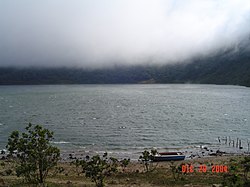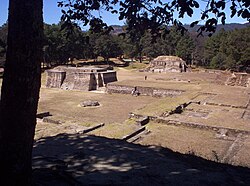This article needs additional citations for verification .(July 2025) |

Tourism became one of the main drivers of Guatemala's economy, an industry that reported more than $1.8 billion in 2008. Guatemala receives about two million tourists annually.
Contents
In recent years, it has led to the visit of many cruise ships that touch important seaports in Guatemala, leading to more tourists visiting the country.
In its territory, there are Mayan archaeological sites (Tikal in the Petén, Quiriguá in Izabal, Iximche in Tecpan Chimaltenango, and in the City of Guatemala). Destinations visited for their natural environment include Lake Atitlán and Semuc Champey. Historical tourism destinations include the colonial city of Antigua Guatemala, which is recognized by UNESCO Cultural Heritage.
















